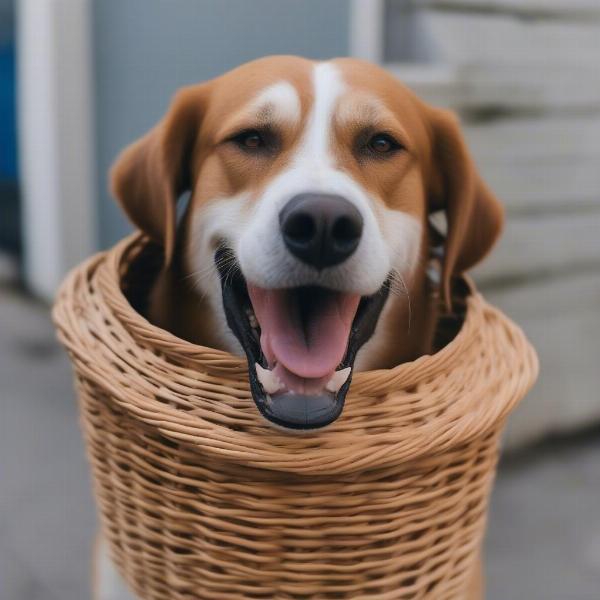Grooming is an essential part of dog care, keeping your furry friend healthy, comfortable, and looking their best. However, the grooming process can be stressful for some dogs, especially those who are not accustomed to it. Using appropriate grooming restraints can make the experience safer and more comfortable for both you and your pet. In this article, we’ll explore different types of grooming restraints, how to use them correctly, and when they are necessary.
Understanding the Need for Grooming Restraints
Why are grooming restraints important? They prevent sudden movements that could cause injury during grooming procedures like nail trimming, ear cleaning, or hair clipping. Restraints can also help reduce anxiety in nervous dogs, creating a more positive grooming experience. While restraints should never be used punitively, they are valuable tools for ensuring safety and efficiency.
Types of Grooming Restraints
Several types of grooming restraints are available, each designed for different purposes and levels of restraint.
Grooming Loops and Harnesses
Grooming loops, also known as grooming nooses, are gentle restraints placed around a dog’s neck and attached to a grooming arm or table. They prevent the dog from jumping off the table but allow for some movement. Grooming harnesses offer more control and support, especially for larger or more active dogs. They typically wrap around the dog’s chest and torso and are also secured to the grooming table.
Muzzles
Muzzles are used to prevent biting, which is crucial for dogs who are anxious or aggressive during grooming. It’s essential to choose a muzzle that allows the dog to pant and breathe comfortably. Basket muzzles are generally recommended as they provide ventilation.
Grooming Tables with Restraint Arms
Grooming tables with adjustable restraint arms provide a secure and elevated platform for grooming. The arms can be positioned to hold the dog gently but firmly, preventing excessive movement.
How to Use Grooming Restraints Safely
Using grooming restraints correctly is paramount to your dog’s safety and well-being. Always introduce restraints gradually and positively, associating them with treats and praise. Never leave a restrained dog unattended. Ensure the restraint is fitted correctly, not too tight or too loose. If you’re unsure, consult a professional groomer for guidance.
Introducing Restraints to Your Dog
Start by letting your dog sniff and investigate the restraint. Then, gently place the restraint on the dog for short periods, rewarding them with treats and praise. Gradually increase the duration of time the restraint is used, always associating it with positive reinforcement.
Monitoring Your Dog’s Comfort
While restrained, regularly check your dog’s breathing and ensure they are comfortable. Look for signs of stress, such as panting, whining, or struggling. If your dog shows any signs of distress, remove the restraint and try again later or consult a professional.
 Dog Grooming Muzzle Safety
Dog Grooming Muzzle Safety
When to Seek Professional Help
If your dog is extremely anxious or aggressive during grooming, it’s best to seek professional help from a certified groomer or a veterinary behaviorist. They can provide expert guidance on safe restraint techniques and help desensitize your dog to the grooming process. Remember, safety and comfort are key to a positive grooming experience for both you and your pet.
Conclusion
Grooming restraints are invaluable tools for ensuring the safety and comfort of your dog during grooming. By choosing the appropriate restraint and using it correctly, you can create a less stressful and more positive grooming experience for your furry companion. Remember to introduce restraints gradually, monitor your dog’s comfort, and seek professional help if needed.
FAQs
- Are grooming restraints cruel? No, when used correctly, grooming restraints are not cruel. They are essential for preventing injuries during grooming procedures.
- What type of restraint is best for my dog? The best type of restraint depends on your dog’s size, temperament, and the specific grooming procedure.
- Can I use a regular leash as a grooming restraint? No, regular leashes are not designed for grooming and can be unsafe.
- How do I introduce my dog to a muzzle? Introduce the muzzle gradually and positively, associating it with treats and praise.
- What if my dog is still anxious despite using restraints? Consult a professional groomer or veterinary behaviorist for guidance.
- How often should I groom my dog? Grooming frequency depends on your dog’s breed and coat type.
- Can I groom my dog myself? Yes, but if you’re unsure about any aspect of grooming, it’s best to consult a professional.
About ILM Dog
ILM Dog is your trusted source for all things dog-related. We offer comprehensive information on dog breeds, health, training, nutrition, grooming, and much more. From choosing the right breed to providing the best care, we’re here to help you navigate every step of your dog ownership journey. Our expertise covers a wide range of topics including grooming best practices, breed-specific grooming needs, and selecting the right grooming tools and equipment. For personalized guidance and support, connect with us at [email protected] or call us at +44 20-3965-8624. Visit ILM Dog for expert advice and resources to ensure your dog’s health and happiness.